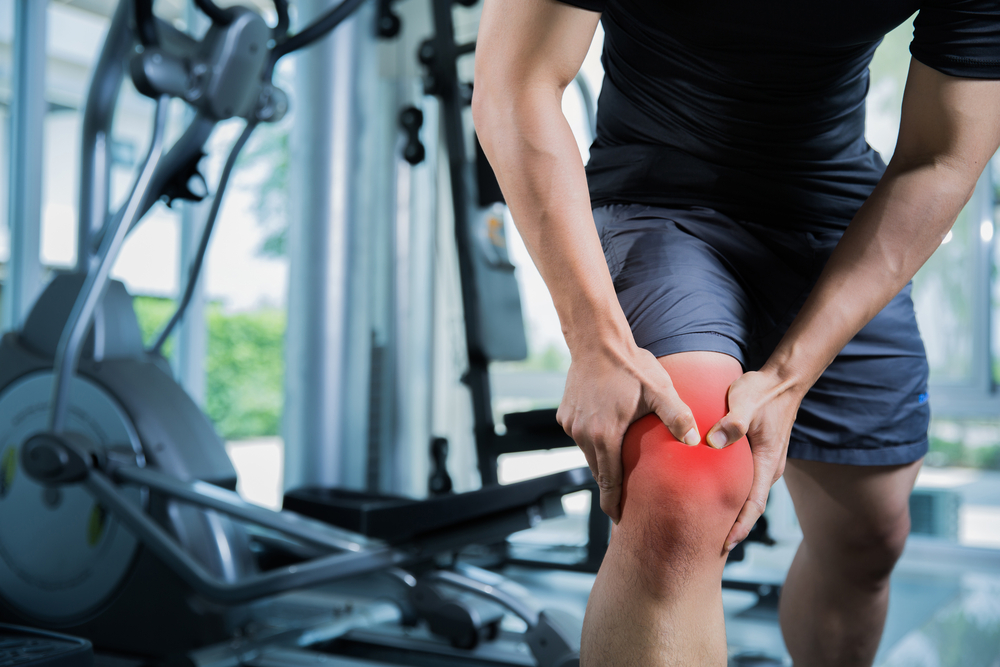Don’t let these common injuries slow you down — here’s how to protect your body during strenuous workouts.
Regularly working out at the gym is a great way to stay fit and strengthen your body, but many common exercises can put you at risk for injury. Weightlifting in particular can wear away at your muscles and joints, ultimately resulting in pain and weakness.
This guide examines the causes and symptoms of five common weightlifting injuries affecting the back, legs, arms, and shoulders. By taking a few simple precautions, you can optimize your gym workout and lower your chance of developing one of these painful conditions.
1. DISC HERNIATION
Weightlifters are especially susceptible to spine injuries like disc herniation. This condition occurs when the cartilage surrounding an intervertebral disc tears or ruptures, causing it to protrude and irritate the surrounding nerves. Symptoms include pain in the neck or lower back, numbness or tingling in the extremities, and a feeling of weakness.
Many weightlifters attempt to add too much weight to their overhead lifts, which can lead to improper form and result in spine injuries. To prevent disc herniation, be sure to lift with your leg muscles and avoid straining your back. Don’t bend at the waist — instead, bend your knees and keep your back straight. It’s also important to build up a strong support system by regularly exercising your legs and core.
2. PATELLAR TENDONITIS
Exercises like weighted leg extensions and sumo squats can lead to patellar tendonitis, an inflammation of the tendon that joins the kneecap to the shin. This often results in burning pain in the knee, usually accompanied by stiffness and redness, especially when bending the knee.
To avoid patellar tendonitis, listen to your body and take breaks when you need them. If you experience knee pain, rest and ice the area. A strong foundation can also protect the knees, so it’s important to build up your thigh muscles. Try eccentric exercises that involve slowly lowering your knee from an extended position.
3. WEIGHTLIFTER’S SHOULDER
By putting repeated stress on the shoulders, weightlifters put themselves at risk for AC joint osteolysis, or weightlifter’s shoulder. This condition is the result of the acromion bone and clavicle rubbing together to create small fractures along the collarbone. It can lead to a dull ache in the shoulder, pain and tenderness, swelling, and a sense of weakness.
Weightlifter’s shoulder can be prevented by using proper hand placement while lifting weights. It’s also important not to extend your elbow behind your shoulder when doing overhead lifts. If you’re unsure about your form, ask a trainer to show you ways to alter your position to take pressure off the AC joint. Be careful to avoid overtraining as well, as that can lead to rapid bone breakdown in the shoulder.
4. IT BAND SYNDROME
This injury often affects people who spend a lot of time on the treadmill, especially those who rapidly intensify their workout without stretching properly. Iliotibial band syndrome is caused by friction between the IT band, which runs from the hip to the knee, and the lateral femoral epicondyle, a bony protrusion at the side of the knee. The symptoms include severe pain on the outside of the knee, a snapping or popping noise, swelling, and a limited range of motion.
To prevent IT band syndrome, always warm up before exercising and stretch to cool down. Be sure to replace your shoes regularly, as worn out sneakers won’t properly absorb the impact from running. It’s also important to keep the knee joints warm, as the IT band becomes less flexible in the cold. At the first sign of leg pain, use a foam roller to release the IT band after exercise.
5. LATERAL EPICONDYLITIS
Lateral epicondylitis, also known as “tennis elbow,” is caused by irritation of the tendon that connects the forearm muscles to the elbow joint. This overuse injury is often seen in tennis players, but can affect weightlifters as well. Like other forms of tendonitis, tennis elbow can cause burning pain and tenderness in the affected area.
Performing high reps of exercises such as dips, rope climbs, and pull-ups can place stress on the elbow. To prevent lateral epicondylitis, avoid bending or straightening your arm all the way during supination and pronation exercises like biceps curls. You can also focus on supplementary stretches that strengthen the wrist and forearm muscles, such as the wrist flexor stretch.
While it’s important to take preventative measures, these common injuries can happen to even the most careful gym-goers. If you do injure yourself while working out, set up an appointment with an orthopedic specialist as soon as possible. At New Jersey Bone & Joint, our orthopedic surgeons and sports medicine experts can help properly diagnose your condition and get you on the road to recovery.


